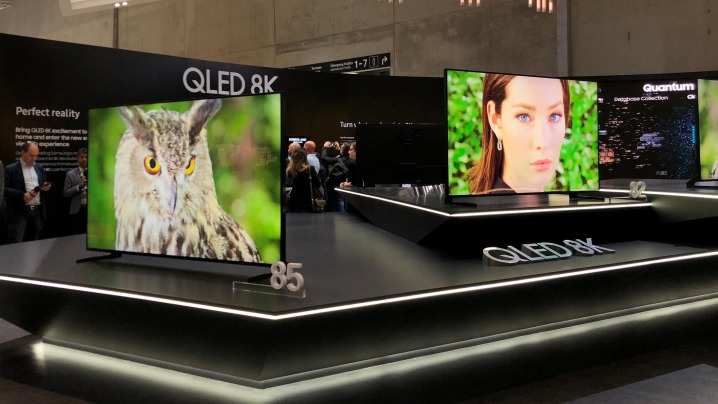Hot on the heels of LG’s 8K 88-inch OLED announcement, Samsung is jumping into the 8K TV game and has announced their new Q900R QLED TVs will available late September 2018 in 65-inch, 75-inch, 82-inch and 85-inch versions.
Why upgrade to 8K so soon, you ask, when there is basically no content for it, aside from PC games?
Well, thanks to 8K AI upscaling, if you feed these TVs quality 4K or even 1080p content, you will get a much sharper picture right away, all the time. Hurrah! The future is here, folks, machine learning is changing the TV industry and accelerating progress. So, the chicken vs egg conundrum of 8K displays versus content has been answered: the chicken came first!
Plus…one of the input ports will be HDMI 2.1!
Although, according to some reports, it seems to only be a variant capable of 8K at 30hz, so definitely not the full 48 gbps. I expect raw bandwidth is probably at most 20 gbps or even the HDMI 2.0a’s current 18 gbps, for hardware compatibility, but with DSC 3X compression which could allow native 4:4:4, 4K 120hz in HDR10+, at least. 8K30 being the same number of pixels per second as 4K120, 120hz is a distinct possibility.
No news about other HDMI 2.1 features like variable refresh rates (VRR) aka Freesync 2, but input lag is reported at a low 15ms which is very low for a TV set! This is probably fine for all but the most competitive pro gamers.
Another interesting spec here is the capability to reach 4000 nits, just shy of half HDR10+ and Dolby Vision’s maximum specification of 10,000 nits. We’re getting there. 4000 nits also conveniently matches the spec of Dolby Pulsar’s HDR mastering monitor which many HDR movies were mastered with, so there’s good reason to be confident in being able take advantage of these extra nits right away for a more punchy image, especially combined with dynamic HDR10+.
Note: For those unfamiliar with HDR, high nits really make HDR look better. Typically, 4000 nits is too high for an overall full bright screen. However, it allows tiny bright highlights (e.g. sun glints off a shiny car, or neon lights in a dark city scene) to really pop-out amazingly in an eye-pleasing way. Most HDR displays & content keep average brightness balanced in an eye-pleasing way.
Stay tuned for reviews as these TVs roll out. It’s certainly an exciting time to be a consumer, and if anything, 8K should help reduce the price of 4K TVs even further.






